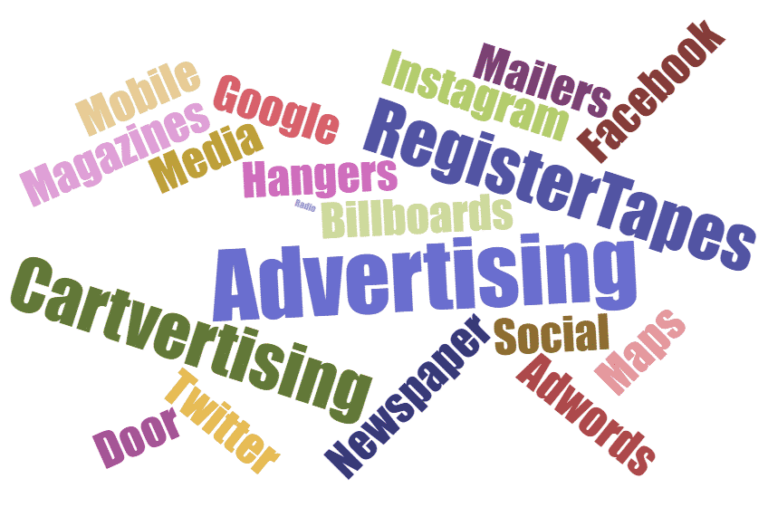Why Do Grocery Stores Stack Cans?
If you’ve ever been to a grocery store, you’ve probably seen a can display. For those who’ve been living under a rock or adhere to intense budget-blinders when you’re shopping, can displays are used by supermarkets to either create a visual eye-catching display or advertise a sale on a certain product.
For example, during Football season, it’s not uncommon to walk into a grocery store and see a huge display sporting the colors or name of your home team. Maybe it’s made out of cartons of Coca-Cola or three hundred two-liters of Mountain Dew —regardless, it caught your eye.
And that’s exactly what these displays are meant to do. By advertising within a local theme, the supermarket can draw a tie between a national product and your small town, which might be enough to make you reconsider an item you’ve grown used to ignoring.
However, when a thousand bottles of Coca-Cola spelling out “Happy Holidays” isn’t enough to seal the deal, most companies will also consider coupling the display with an unbeatable coupon. From here, all the display has to do is catch your eye. With the product at the top of your mind, showing you a coupon is an easy way for the store to secure the sale.
How To Get In On The Action
You could stack a thousand soda cans in your restaurant, but why not take advantage of your grocery store’s massive marketing efforts by seriously considering grocery store advertising. Coupling the right supermarket advertisement with the right display at your place of business in the shopper’s journey can help you zero in on your customers. It’s often not enough to simply put up a poster near the doorway of your store. You need to have your ad be seen where the people are. So, make a strategic plan, and figure out how to perfect your in-store supermarket advertising.
Targeting
If you’re not reaching the right consumer base, you’re not going to attract any new sales. For local businesses like realtors, salons, and dry cleaners, it’s important that you focus on appealing to the people in your community, and there’s one place you can expect to find all of them —Supermarkets. In fact, studies have shown that grocery stores pull the vast majority of their customers from a three-mile radius. Locality is the keystone of grocery store advertising. Knowing who frequents what store can also help you get the most out of your supermarket advertisement.
Targeting can occur by persona or by geography. Persona targeting looks at your customers and asks the question, “What do my customers do, and where would they see my ad?” For example, athletes love smoothies. If you’re a local gym or athletic wear supplier, you’ll probably garner more attention by advertising in a healthy smoothie shack than you will in a pizza shop. However, who knows. Maybe all that late-night pizza regret could lead to a few more customers in the morning…
Geographic targeting is when you try to reach your customers by advertising where they live, play, or work. Trying to predict these locations is similar to persona targeting, but it can be simplified because there is a good chance your customers live in the exact same places as a local grocery store’s customers. This is one of the reasons rewards programs are so popular. Customers sign up for rewards and include their home info or zip code. Businesses can then use that data to target their marketing.
In some cases, hyper-local advertising (which is when you release targeted ads within just a few miles of a location) can be extremely effective. One way to do this is to put up signage, which can easily point customers in your direction or advertise local specials.
Sometimes you can find both types of targeting in a single medium. Grocery stores, for example, offer a combination of persona and geo-targeting. Statistically, they pull 85% of their customers from a 3-mile radius of the store. This hyper-locality makes grocery store advertising so appealing for local businesses and is why we get so many questions about creating advertisements for grocery stores.
Finding a supermarket near you and then tailoring your supermarket advertisement through persona targeting can help you attract more business and make the most of your offers.
Exposure
How your ad makes its way to the consumer is called Exposure. This process covers both the delivery and presentation of the ad, so it’s important to find the right balance in your campaign. Think about how you feel when you get that dreaded pop-up ad on a website when all you want to do is see the article your friend sent. But when ads are really unobtrusive, you can easily skip over them like the ones at the top of a Google search. Each of these presentations is a matter of calculating exposure and the degree to which they interject in the potential customer’s action.
Ultimately, exposure needs to be a little pushy because you’re going to ask the customer to buy something eventually. However, if the ad is too invasive, it can lead to serious consequences and derail your entire campaign. A tiny pastel coupon in a magazine may go overlooked, and a huge flier tucked under your windshield could just get balled up and thrown away.
Calculating your consumer’s response to your advertisement is just part of the game. Part of why grocery store advertising is so effective is because consumers are already prepared to shop, and placing an advertisement on a receipt directly into their hands or having it just inches from the fingers on a shopping cart while they shop is a firm reminder of your business’s services without being too “salesy.”
It’s important to select your graphics around what you’re really trying to draw attention to and make sure your customers get the right message. For example, the cartoon drawing your daughter did of you may be super cute, but if it’s not attracting attention to the awesome 2-for-1 deal you’re offering, you may have to go with another image. Similarly, if your team designs a callout that’s too flashy for your in-store supermarket advertising campaign, customers may ignore it and mentally liken it to those horrible online pop-up ads.
Try to find something that highlights your business and draws attention to your promotion without overwhelming your prospective customer. Advertising on the backs of receipts is an easy way to get that image out there, especially in grocery store advertising. Receipts are something customers are not only sure to look at but will also hold onto, so they’re a great medium for presenting your advertisement. Plus, they’ll never be considered too intrusive, and they’re going to make their way into your customers’ hands no matter what. Likewise, advertising on a grocery store shopping cart is a great way to be ever-present without being intrusive to make sure your brand is front-of-mind when the customer is ready to buy.



